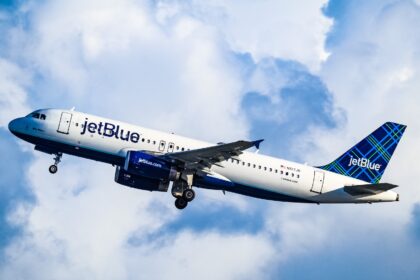Waymo is ready to start “laying the groundwork for future commercial service” in the Seattle area, the autonomous vehicle company announced Tuesday. But it could still be a while before driverless taxis start shuttling people around city streets as Washington state lacks regulations permitting their operations.
Waymo told GeekWire that it’s rolling out a dozen of its autonomous vehicles this week in the Seattle area, testing to make sure its “technology can adapt to Washington streets,” spokesperson Sandy Karp said.
In posts on the official company blog as well as social media channels, Waymo said it was heading north to the Pacific Northwest.
“We’ve spent years getting to know the area — from communities around [Lake Washington] to its notoriously wet weather,” Waymo’s blog post read. “This experience has been vital in helping us serve riders rain or shine in cities across the country. We’re eager to bring that same safe, accessible, and sustainable service to you.”
Waymo will be testing electric Jaguar I-Pace SUVs and EVs from Zeekr, a Chinese automaker under the Geely Holding parent company, which also owns Volvo. Karp described the Zeekr EVs as “adorable little blue boxes.” The vehicles will use sixth-generation Waymo technology that is adapted for wet weather.
Waymo did not provide a ballpark for when Seattle-area riders will be able to hail a driverless taxi, saying it depends on how long it takes to complete safety testing with drivers present and then fully autonomously without riders.
Getting driverless vehicles up and running in Seattle and surrounding cities, including Bellevue, has been a slow process, GeekWire reported last month. Washington lawmakers have wrestled with concerns about vehicle safety and aren’t racing to assemble a framework that gets self-driving cars on the road.
Companies that operate such vehicles have argued that the absence of a roadmap to commercialization can discourage rigorous testing.
Waymo, which began in 2009 as the Google Self-Driving Car Project, currently facilitates hundreds of thousands of fully autonomous trips each week across five cities, including San Francisco, Los Angeles, Phoenix, Atlanta, and Austin. Along with Seattle, the company said Tuesday it was adding Denver to the list and previously said it plans to expand service next year to Miami, Washington, D.C., and Dallas.
In 2022, Google tested cars in Bellevue and Kirkland for six months to better understand operations in rainy weather. Tuesday’s announcement signals a longer commitment, Waymo said.
“We’re here to serve riders in the future this time,” Karp said.
Seattle’s Department of Transportation (SDOT) has spent years preparing for autonomous vehicles, with the creation of a permitting program for vehicle testing; a strategic vision for integrating driverless vehicles into the city; plans for a first-in-the-nation program to keep autonomous vehicles away from emergency zones; and stakeholder recommendations for ensuring equity and environmental protections in driverless car regulations.
Karp said Waymo will scale its fleet over time and operate in Seattle’s International District, Central District, Queen Anne and University District neighborhoods as well as Bellevue and Kirkland.
The company is eager to offer improvements in “safety and mobility” in Washington through its service, Karp said.
She added that Waymo and Seattle have aligned objectives, saying there’s a “synergy between the city’s shared goals to welcome and explore new technology, especially the sustainability aspect.”
Amazon-owned Zoox first began testing in Seattle back in 2021. CNBC reported earlier this year that Zoox opened a new manufacturing facility in California to boost production of its robotaxi fleet ahead of commercial rollout.
General Motors and Microsoft-backed Cruise tested cars in Seattle in 2023 — to also learn from the wet, hilly environment. But the company shut down a Bellevue engineering center later that year and GM exited the robotaxi market in December 2024.
Related:
- Despite status as a global tech hub, Seattle passengers still can’t hail a driverless ride
- What it’s like to ride a self-driving Waymo car
Read the full article here









